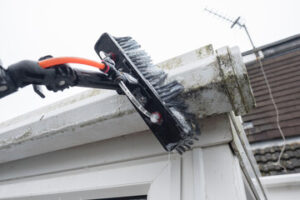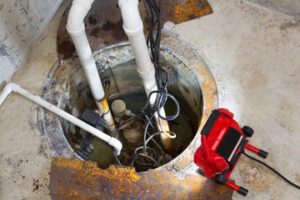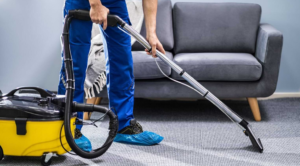The durability of stamped concrete makes it a great choice for driveways, patios and walkways. It is also less likely to crack than other materials, such as bricks or stones.

Using different textures adds to the visual appeal of a finished project. In this example, a slate texture has been used for the main area, with borders crafted in a brick effect.
As far as surface materials go, stamped concrete isn’t hard to keep looking its best. It’s a budget-friendly alternative to other materials like bricks, paving stones, or tile. It can even mimic the look of wood, giving your outdoor living spaces a touch of natural elegance. The key is regular cleaning and resealing. With this, your patio or pool deck will be able to withstand harsh winters and heavy traffic without showing signs of wear and tear.
To maintain a clean exterior, sweep the concrete regularly with a push broom or use a power washer on a low setting. A mild liquid cleaner can also help remove stubborn dirt or grease stains from the concrete surface. Just be sure to rinse it thoroughly afterwards to prevent a build-up of residue that can damage the concrete.
When it comes to indoors, a simple broom and mop should do the trick for most surfaces. However, a vacuum cleaner with a floor brush attachment can also be effective for areas that get a lot of foot traffic, especially those near doors or entrances. For tough stains, an alkaline cleaner can be useful, but always follow the manufacturer’s instructions and test on a small area first.
Another important step in maintaining your stamped concrete is having a water-repellent sealer applied to the surface. This helps to keep dirt, oil, chemicals, and other staining agents from penetrating the surface and damaging it over time. It can also make the surface less slippery, making it a safer choice for kids and pets.
A quality sealant should be used on all concrete surfaces, but it’s particularly beneficial for stamped concrete. Using one on your new stamped concrete will ensure that the color stays vibrant and protects against abrasions, water penetration, and other common deterioration factors. Your concrete installation contractor will be able to recommend the right product for your project.
Durable
Concrete is an extremely durable material that can be used to build foundations, driveways and sidewalks. It is also highly affordable compared to other paving materials. However, it lacks the aesthetic appeal of more decorative surfacing options. With the addition of stamping and coloring, concrete becomes a versatile material that can be utilized for a wide variety of outdoor applications. Stamped concrete is becoming an increasingly popular choice for patios, pool decks, driveways and more. Its durability and versatility make it an excellent option for commercial and residential properties.
To create a stamped concrete surface, the contractor pours regular concrete and then alters it before it hardens using a stamping tool with a design or pattern. This process allows the concrete to take on a unique appearance that resembles other types of materials, such as flagstone, brick or natural stone. The result is a beautiful, long-lasting surface that can enhance the curb appeal of your home or business.
Unlike pavers, stamped concrete is less expensive to install and maintain. It is also more durable than paved stones, as it can withstand the weight of heavy vehicles and harsh weather conditions. However, it is important to note that like any other type of paving material, stamped concrete can crack over time. This is particularly common in cold climates, where moisture from ice and snow seeps into tiny cracks and then expands as it freezes, causing them to grow bigger over time.
If you want to keep your stamped concrete looking its best, it is essential to seal it regularly. This will help to protect it from stains and moisture, as well as guard against abrasion and strong chemicals. It is recommended that you reseal your concrete every two to three years.
It is also a good idea to use a slip-resistant additive when applying the sealant, as this will help to prevent your concrete from becoming slippery when it rains or is exposed to ice and snow. With proper maintenance, stamped concrete can last for decades. However, if you are not diligent about cleaning and resealing it, the color may fade over time due to dirt, sun exposure or other environmental factors. If this occurs, it is easy to restore its original luster by resealing it.
Affordable
The old adage “you get what you pay for” applies to many home improvement projects. But with stamped concrete, you’ll save money compared to other landscape materials, and the results will outweigh the initial investment.
Stamped concrete can mimic the textures and colors of pavers, natural stone, tile, wood, brick and cobblestone at a fraction of the cost. It also offers more design options, such as wavy borders or contrasting color patterns. In addition, it can be poured and stamped without extracting existing landscaping. A quality contractor will provide a detailed estimate for the project, including costs of materials and labor. Make sure to compare quotes from several contractors and ask about the details of the job, including the specific texture and pattern you are looking for, as these can affect pricing.
It’s important to know that the concrete you’re working with is high-quality. This ensures that the stamping will be durable and long-lasting. It will also be resistant to cracking and moisture. In addition, a protective coating will be applied to the surface to protect against harsh chemicals and natural wear.
Another cost-saving advantage of stamped concrete is that it doesn’t require the extra expense of a vapor barrier or gravel base. This can cut your overall installation costs significantly by eliminating the need for these costly add-ons. Depending on the size of your project and complexity of the design, the cost of stamped concrete can range from $8 to $20 per square foot.
If you’re installing an outdoor kitchen, you may need to factor in the cost of appliances, a hot tub or grill and even seating. However, a stamped concrete patio can serve as an excellent backdrop for a relaxing backyard entertainment area where friends and family can gather to enjoy the warmth of your new outdoor living space.
If you are unsure of what your budget will be, ask your contractor to create a rough draft of the layout and cost. This will help you to understand all potential expenses and make sure that your vision for your patio is realistic within your price range. It’s also a good idea to inquire about potential upcharges, such as complex demolition or site prep issues that may raise the cost of your project.
Versatile
When compared to traditional concrete, stamped or imprinted concrete is more versatile. It can be designed to look like brick, flagstone, tile, wood or a variety of other textures and materials that add value to your home. In addition to its aesthetic versatility, it is more affordable and requires less maintenance than other outdoor paving options.
Unlike other outdoor flooring materials that can crack, chip or erode over time due to environmental conditions or heavy traffic, stamped concrete holds up well against wear and tear and maintains its beauty for years without the need for regular sealing or waxing. It is also a green, eco-friendly choice, which appeals to today’s homeowners who are concerned about the environment and want to make a statement of sustainability in their homes.
Stamped concrete can be used to create a unique, one-of-a-kind look for driveways, walkways, patios and pool decks. It can be poured into various shapes and forms to accommodate the existing layout of your backyard or other landscape elements like plants, trees and retaining walls. It can even be formed into steps or a custom pattern that integrates the look of stone or brick into your home’s architecture.
The color possibilities of stamped concrete are endless as well. By using different color release systems, it is possible to achieve a wide range of textures and hues to match any design imaginable. From simple shades that mimic natural materials to vibrant, eye-catching patterns that showcase an artistic vision, the versatility of stamped concrete allows you to customize your outdoor space and reflect your own style.
Because of its durability, longevity and cost effectiveness, stamped concrete is an excellent choice for outdoor spaces that demand a high level of functionality. From a practical standpoint, it is easy to install and can be done quickly over an existing concrete slab. In comparison to other paving options that require more labor intensive installation, such as pavers, it is a much faster and simpler process.
As for the upkeep, stamped concrete is fairly straightforward and can be easily maintained by routine cleaning and occasional resealing. Efflorescence, dirt and weathering can cause the surface to lose its original vibrancy over time, but this can be minimized by resealing on a regular basis.








